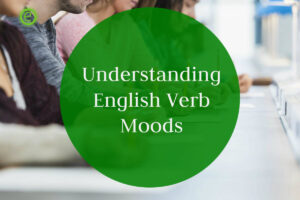As we are human beings we talk a lot about or moods – sometimes good mood the bad mood. Sometimes you are annoyed, sometimes you just have that light mood when you are happy. But have you given a thought that there might be the actual significance of mood in English Grammar? Such moods also prevail in every piece of a writer’s work.
The mood will set the scene in the literature and also in your life. But what does it actually mean? The way grammatical mood is described it can also be considered as a mode which would refer to the quantity or form of a verb in the sentence. With English Grammar, you can denote the moods with a tone of a verb in a sentence which would be so intentional of the writers or speakers mood and what they wish to convey with it.
There are five different moods types in grammar:
- Imperative
- Conditional
- Indicative
- Interrogative
- Subjunctive
Suppose when a sentence contains a request or a command then it would carry a mood in the sentence which would be imperative. It will be helpful in expressing the wish, or a doubt or a hypothetical idea. This hypothetical idea might also be considered as the subjunctive.
Now we will be taking a closer look at each of the verb form.
1. Conditional Mood
When a sentence is used to describe a conditional mood then it will contain an auxiliary verb (also called a helping verb) and along with that the main verb. You would easily be able to spot the conditional mood whenever you see an auxiliary verb.
When words such as ‘would’ and ‘should’ are used then they will be supporting the main verb. Another example through which you can easily tell about the mood is the use of the phrase “if this – then that”. It clearly shows that one action is dependent on another.
You can understand it in a better way by looking through the examples.
- They would be living in NYC if they would manage to submit the documents on time.
- If it wasn’t so late we would still have time to visit the aquarium in the evening.
- If you might be knowing the history of the boy then you would have never accepted the proposal.
2. Imperative Mood
When in a sentence you see that a request is made or command is made then these sentences do not have any mild suggestions. The verb would be expressing the direct call to action. It will be very clear who is the subject.
You can understand this in some examples:
- You should move the table in the corner.
- You need to make sure that Meghna calls the superstore by tomorrow.
- When you would be able to go to school, you must study hard.
- It’s already nine, you must start preparing the dinner.
3. Indicative Mood
When you see some factual expressions or statements then you can understand the perspective of the speaker. You would see that you are sharing some facts or details that we would be perceiving.
For example:
- Mona will be laughing when she sees him in a good mood.
- There are a lot of happy children walking down the street.
4. Interrogative Mood
It can be understood from the sentence itself, that when you sense some sort of uncertainty then it will be an interrogative Mood.
In such sentences, there would be two verbs – Auxiliary verb and the main verb. It will also provide clarification for the main verb of the sentence. You must ensure that proper punctuation is used.
For Example:
- Will you be coming to the mall today?
- Is she going to be ok?
- Did you bake the delicious turkey for the thanksgiving?
5. Subjunctive Mood
In sentences with subjunctive mood, you would sense something doubtful or hypothetical wishful and not tactful. You will clearly get to know that it is subjunctive.
Conclusion:
Now you are well aware of all the differences and definition of the English Grammar moods and how they can be used in the sentences.
Quick Links


